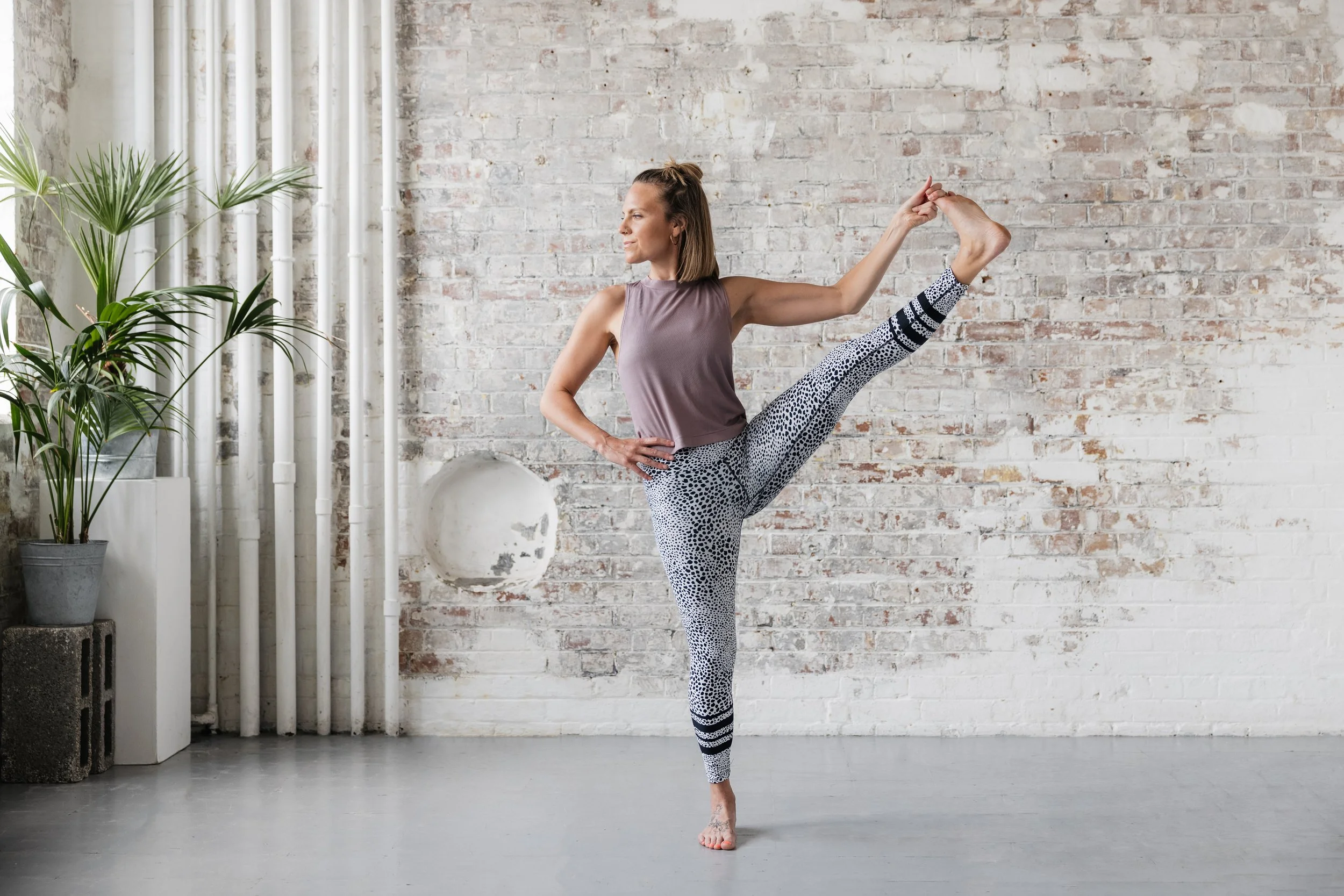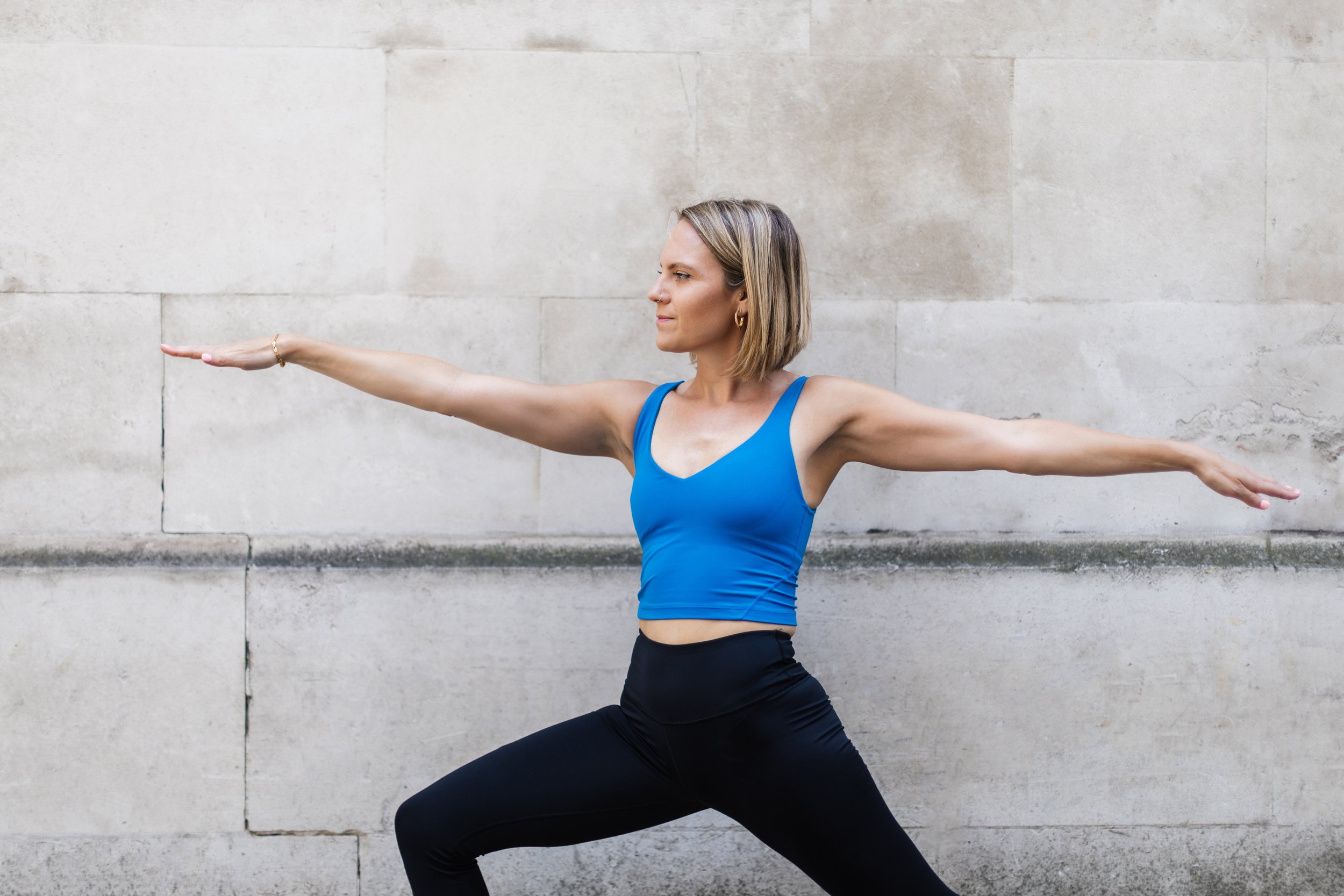
Ashtanga Yoga FAQ’s
These are some of the questions I get asked most often. If you think I’ve missed anything and still have a question feel free to get in touch!
What is Mysore-style Ashtanga Yoga?
Mysore-style Ashtanga yoga is named after the city of Mysore in Southern India, where the system of yoga was developed by Pattabhi Jois (see more below) and his guru Krishnamacharya. Sharath Jois, the grandson of Pattabhi Jois runs his own yoga institute in Mysore. I studied with Sharath in Mysore to receive my teaching authorisation.
Mysore-style differs from the typical “led class” in that students are taught the Ashtanga series individually within a group environment. This means that each student receives personalised instruction and works at a pace that suits them, making it the safest way to practice yoga.
I’m a beginner, can I practice Mysore-style?
Yes! Mysore-style is the best way to start your yoga journey because you’ll receive one-to-one instruction within the group setting.
All newcomers learn a very straightforward, flowing sequence known as “Surya Namaskar” (the sun salute) followed by some seated breathing exercises and finishing with a rest.
Your first practice will be between around 45 minutes depending on how much time you have, and thereafter it will grow at a pace to suit you.
Book your one to one beginner’s intro here.
No, it’s completely fine to come to class if you don’t know the sequence or if you’ve been taught it before but have now forgotten. I will guide you through and may suggest repeating certain asanas (yoga forms) while you memorise the sequence.
Do I need to know the Ashtanga sequence to come to class?
I want to practice yoga but classes are too expensive, what can I do?
I offer a limited number of scholarship places for evening practice at astanga Yoga London. These are for people who come from a marginalised background or experience a change in circumstances causing unexpected difficulty meeting their Shala fees.
get in touch to discuss concession or Scholarship pricing.
What should I wear to my first class?
You can wear what you feel comfortable in. You don’t need to have specific yoga clothes.
You might find it helpful to wear clothes that allow you to move comfortably and keep cool. Shorts or leggings and a t-shirt or vest work well.
being mindful of others in the room, practice with your top half covered.
It’s also likely that you’ll sweat so bringing a towel is recommended.
Why is there no class on moon days?
Traditionally Ashtanga yoga is practised six days a week, with rest days taken once a week.
Rest is also taken on a full moon and a new moon (moon days). The idea is that by observing moon days, we become more in touch with the cycles and rhythms of nature. In addition,
in India, where the practice originates, many festivals occur on the full moon and new moon days so these days would be taken as holidays. You can read more about why we don’t practice on moon days here.
Why don’t women practice when they are menstruating (ladies holiday)?
Women often opt to take the first three days of menstruation as “ladies’ holiday” from practice.
The reason for this is that engaging moola and uddiyana bandha create a strong upward flow of energy, which is contraindicated to the downward flow of energy that occurs whilst menstruating.
It’s a personal choice how many days (if any) you choose to take for ladies’ holiday.
Some women prefer to begin theirs on the second day of menstruation or to miss two or four days rather than three. There are no set rules and it’s important to do what feels right for you.
Can I eat before class?
If possible try to practice on an empty stomach. If you practice in the evening avoid eating at least two hours before practice.
Food in the system can create discomfort during your practice.
If you suffer from low blood sugar or need to eat have something small like half a banana or some nuts and dates. If you have high blood pressure a salty snack might help.
Should I drink water when practicing?
Ideally, you should avoid drinking any liquids at least 10 minutes before class and whilst you are practising.
During the practice we are creating internal heat to purify our system; water has the opposite cooling effect. It also becomes a distraction to the practice if we are always stopping to take a drink.
If this is a challenge for you, try to cut down the amount of water you drink during practice gradually. This does not apply if you are practicing while you are pregnant, in which case you should drink as much water as you need during practice.
What’s the significance of the opening and closing chants?
Yoga is part of the spiritual practices of India where chanting is very commonplace. Chanting at the beginning and end of the practice helps bring our focus to the present moment and acts as a “container” for our practice. The chant at the start of the class gives thanks to the yogic tradition and the teachers that have come before us, and in particular to Patanjali, the author of the Yoga Sutras. The closing chant asks our leaders to be just and for a peaceful world.
We begin each session by chanting the Ashtanga Yoga opening mantra as a group. If you prefer not to chant you’re welcome to continue with your practice. If you’re interested in learning the opening and closing mantras you can find out more here.
How many days a week should I practice?
It’s traditionally it’s suggested to practice six days a week. This might seem like a big commitment.
I would suggest committing to something manageable for you and sticking with it. Two or three days per week is a good place to start.
Gradually over time, you may wish to add more days to your practice schedule.
Remember - if you’re short of time, you can modify your practice accordingly and do some sun salutations at home. Little and often is always best.
I’m pregnant what should I do?
If you already have an established Ashtanga practice, it is recommended you don’t practice for the first 13 weeks of your pregnancy.
After this time you’re welcome to come back to class and I will help you to modify your practice accordingly.
I also recommend reading “Yoga Sadhana for Mothers” by Anna Wise and Sharmilla Desai.
Those without an existing Ashtanga practice prior to pregnancy are advised to wait for a minimum of three months postpartum before beginning a practice.
I don’t want to receive any adjustments can I still come to class?
Yes, you are very welcome.
It’s always your choice if you would like to receive adjustments or if you would no adjustments in practice.
If you’re new to class we will discuss your preference and you can always change your mind at any time.
You may also choose adjustments for some asanas (yoga forms) and not others, or to receive adjustments on some days and not others.
This is always your preference and you do not have to explain your reasons.
Additionally, if you feel pain from a hands-on adjustment you receive from the teacher or assistant, anywhere you practice, let them know.
I have an injury, should I still practice?
Personally, I’ve always found it helpful to continue with my practice, albeit with modifications to accommodate the particular injury.
Continuing to move keeps the blood flowing and helps to aid repair, provided you’re not exacerbating the condition.
If you have an injury it’s helpful to communicate this to your teacher, as they will be able to advise you on how to modify your practice.
Ultimately while we are breathing we can practice yoga, and at times a seated breathing practice might be sufficient.
If you have an acute injury or have had an operation, always seek medical advice before returning to practice.
I’ve started practicing the intermediate series, why should I practice the primary series on the last practice day of the week?
The primary series is the foundation of the Ashtanga system. It is “yoga chikitsa” or yoga therapy.
Because the primary series is grounding in nature its the perfect way to end the week. Doing so allows those who practise other series the rest of the week an opportunity to experience its benefits.
Should I learn new Asanas (yoga forms) from my teacher or try them myself at home?
One of the reasons Mysore-style practice differs from other styles of yoga is because you practice with the same teacher up to six days a week.
Over time, the teacher gets to know you, your practice and your lifestyle, and a relationship develops.
A good teacher will work with you to create a practice that’s safe, sustainable and beneficial over the long term.
This should be a collaborative process between you and your teacher with plenty of space for questions and feedback.
It’s always safer to learn asanas from a teacher who can provide live feedback as you practise rather than from a video tutorial.
Can you speak to the abuse history within Ashtanga Yoga?
In 2017 it came to light that Pattabhi Jois (d. 2009) had touched female students sexually during classes under the premise of offering hands-on assists. Over the course of many years, when the female students Jois abused spoke out, their claims were either ignored or rationalised by Senior members of the Ashtanga community. In 2019, R. Sharath Jois publicly acknowledged his grandfather’s abuse.
It’s important that we listen to, and acknowledge the experiences of those who have come forward.
Unfortunately, many of the major yoga styles and lineages have individuals within their organisations who have perpetrated abuse. These acts represent a violation of trust and are reflective of harmful power dynamics that can exist within organisations and teacher/student relationships.
As a yoga teacher and trauma-sensitive yoga facilitator, I’m committed to upholding high standards of professionalism. I’m regulated by the Centre for Trauma and Embodiment and continue to be mentored by Hamish Hendry from Astanga Yoga London.


